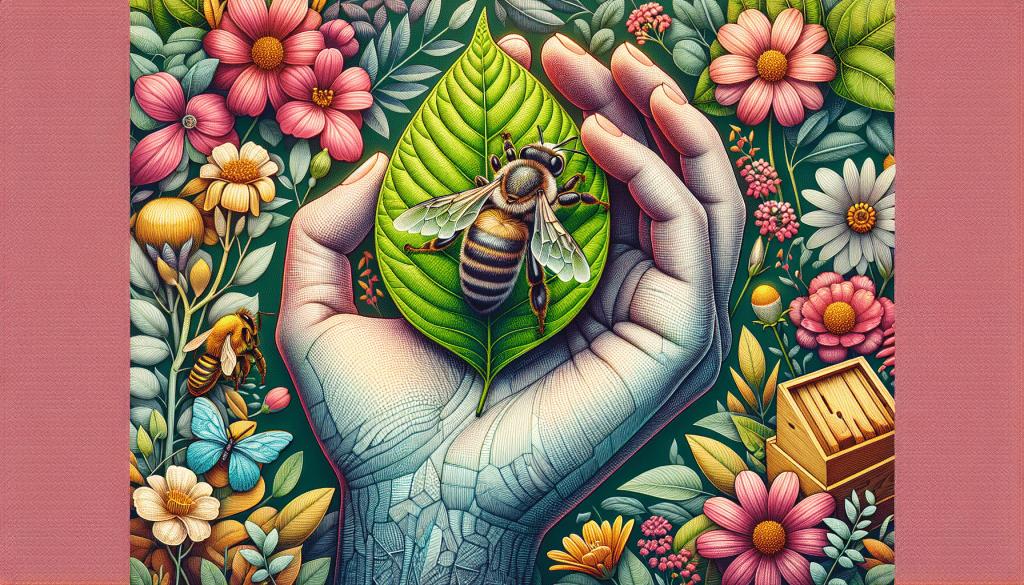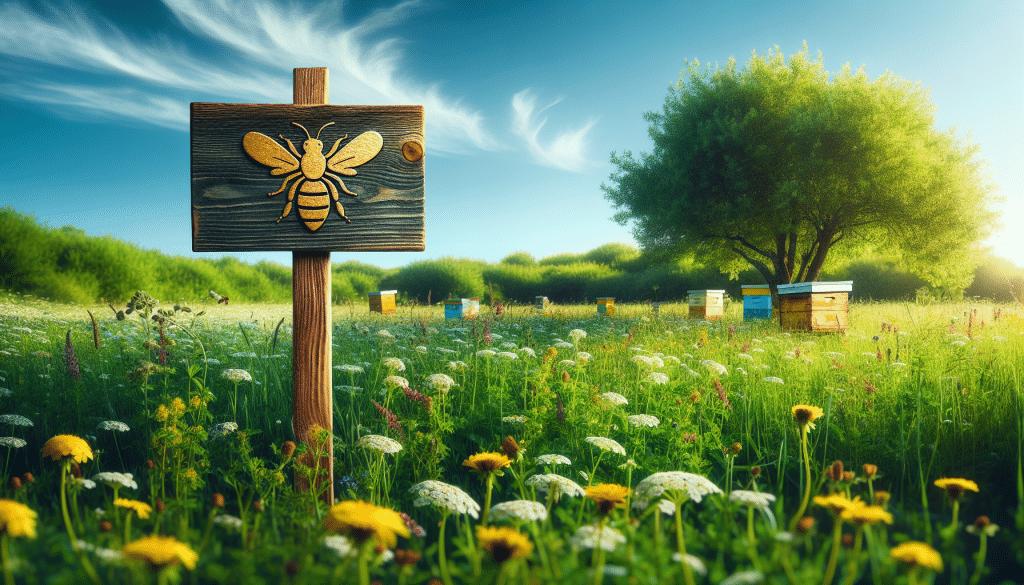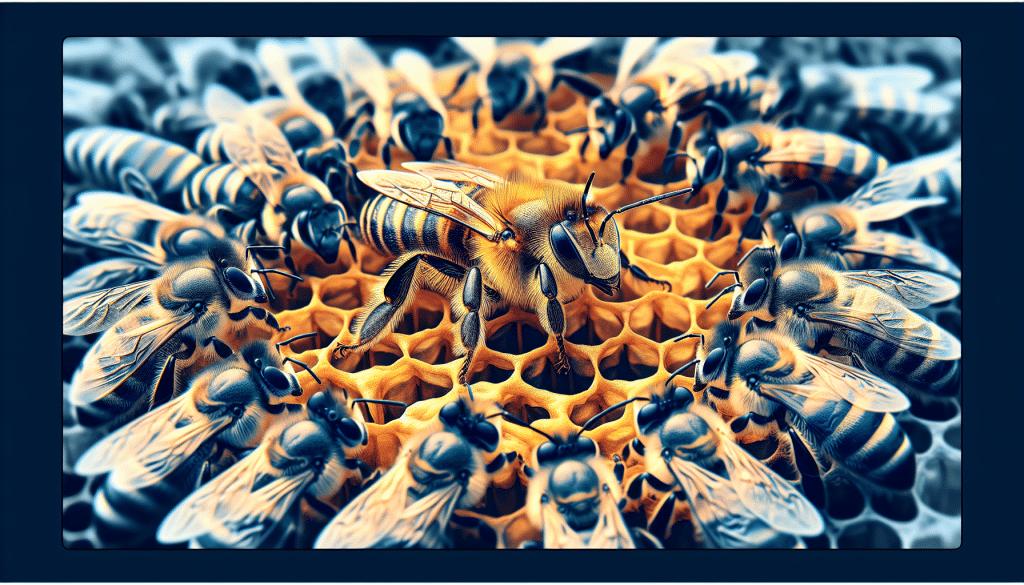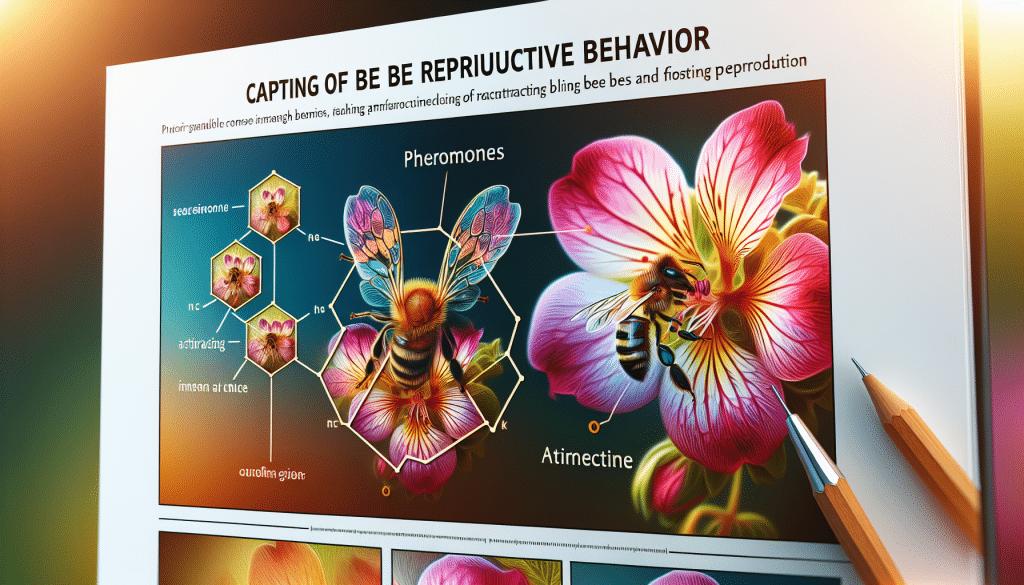So you’re probably thinking, what’s all the buzz about conserving bee habitats? Well, let me tell you, it’s not just about saving those fuzzy little creatures that produce delicious honey. No, no, my friend, it goes much deeper than that. Conserving bee habitats is a vital mission for environmental preservation. These little pollinators are like the unsung heroes of our ecosystem, and without them, we’d be in a sticky situation. So grab your beekeeping suit (or maybe just some bug spray) and join the buzz-worthy adventure of protecting bee habitats.

The Importance of Bees to Ecosystems
Bees, those tiny buzzing creatures, may seem like just another insect flying around, but they play a vital role in our ecosystems. Their importance lies in their ability to pollinate plants, which is essential for the reproduction of many species. Bees are responsible for pollinating approximately 80% of flowering plants, including fruits, vegetables, and nuts. Without their pollination efforts, we would not only lose delicious foods but also see a significant decline in overall biodiversity.
Pollination and Biodiversity
When bees flit from flower to flower, collecting nectar and pollen, they inadvertently transfer pollen from the male reproductive organs (stamens) to the female reproductive organs (pistils). This process, known as pollination, fertilizes the eggs and allows plants to reproduce and produce seeds. Through their pollination efforts, bees foster biodiversity by allowing different plant species to thrive and ensuring genetic diversity within populations. They play a crucial role in preserving the delicate balance of ecosystems.
Bees as Keystone Species
Bees are not just mere pollinators; they also serve as keystone species in many ecosystems. A keystone species is one whose impact on the environment is greater than what would be expected due to its abundance or biomass. Bees directly or indirectly affect the survival of numerous other species by shaping the structure of their habitats. Their role as pollinators influences the plant composition, which, in turn, affects other organisms that depend on those plants for food and shelter. Bees’ presence or absence can have a cascading effect on the entire ecosystem.
The Economic Impact of Bees
Apart from the ecological benefits they provide, bees also play a significant economic role. Their services as pollinators contribute to global food production and, consequently, the agricultural economy. In the United States alone, the economic value of bee pollination has been estimated at around $15 billion annually. Various crops, including almonds, apples, blueberries, and coffee, heavily rely on bees for successful pollination and higher yields. Thus, protecting bee populations is not only crucial for the environment but also for ensuring food security and a stable economy.
Current Threats to Bee Populations
Sadly, bee populations worldwide are currently facing numerous threats that endanger their survival. The decline in bee numbers is alarming, and if we don’t take immediate action, it will have severe consequences for ecosystems, agriculture, and ultimately, our own well-being.
Pesticides and Chemical Pollutants
One of the primary threats to bees is the use of pesticides and other chemical pollutants in agriculture. Bees can come into contact with these chemicals in a variety of ways, including through contaminated pollen and nectar, which can have lethal or sublethal effects on their health. Neonicotinoids, a type of pesticide commonly used in farming, have been particularly implicated in bee declines. Therefore, finding alternative pest control methods and reducing pesticide usage is crucial for bee conservation.
Habitat Loss and Fragmentation
As human populations continue to expand, natural habitats are being destroyed or fragmented, leaving bees with limited access to sufficient foraging areas and nesting sites. Conversion of land for agricultural purposes, urbanization, and infrastructure development contribute to the loss of bee habitats. This loss disrupts the delicate balance of bee populations, as they struggle to find suitable places to live and forage for food.
Climate Change Effects
Climate change poses another significant threat to bee populations. Temperature extremes, changes in precipitation patterns, and shifts in flowering times can all impact the synchrony between bees and their plant partners. Bees rely on specific flowering periods to obtain nectar and pollen, but if these times become mismatched due to climate change, their survival and ability to reproduce may be compromised.
Disease and Parasites
Like any living organism, bees are also susceptible to diseases and parasites. Diseases like foulbrood and viruses can weaken bee colonies, making them more vulnerable to other threats. Additionally, parasitic mites, such as the varroa mite, can cause significant harm to bee populations. These pests feed on bees and transmit diseases, leading to colony collapse disorder and high mortality rates.
Invasive Species
The introduction of invasive species can have detrimental effects on native bees. Invasive plants can outcompete native plants, reducing the availability of floral resources for bees, while invasive insects can prey on bees or compete for resources. These invasions further disrupt ecosystems and contribute to the decline of bee populations.

Understanding Bee Habitats
To effectively conserve bees, it is essential to understand their habitats and the specific requirements they need to thrive.
Floral Resources
Bees depend on the availability of diverse and abundant floral resources for their survival. Flowering plants provide bees with nectar as a food source and pollen as a protein-rich diet. By planting a variety of bee-friendly flowers that bloom at different times of the year, we can ensure a continuous supply of food for bees throughout the seasons. Native plant species are particularly beneficial as they have coevolved with native bees and provide the best resources.
Nesting Sites
Bees require suitable nesting sites to build their nests and rear their young. Different bee species have distinct nesting requirements, with some nesting in the ground, while others prefer cavities in plant stems or dead wood. Providing a variety of nesting options, such as bee hotels or leaving deadwood in natural areas, can help support bee populations.
Seasonal Habitat Requirements
Bees have varying habitat requirements throughout the seasons. For example, some bee species may require specific flowering plants during their active periods, while others may need certain nesting sites during their reproductive phases. Understanding these seasonal requirements is crucial for conservation efforts aimed at sustaining bee populations throughout the year.
Conservation Strategies for Bee Habitats
Given the threats faced by bee populations, implementing effective conservation strategies is of utmost importance.
Creating and Restoring Habitats
To support bee populations, creating and restoring habitats that provide the necessary floral resources and nesting sites is vital. This can involve planting pollinator-friendly gardens, establishing wildflower meadows, or restoring native vegetation in degraded areas. By ensuring an adequate supply of food and suitable nesting sites, we can provide bees with the resources they need to thrive.
Supporting Organic Farming Practices
Promoting organic farming practices can significantly reduce the negative impact of pesticides on bees. Organic agriculture avoids or minimizes the use of synthetic chemicals and focuses on natural pest control methods. By supporting organic farmers and choosing organic products, we can help create a safer environment for bees and other pollinators.
Reducing Pesticide Usage
To protect bee populations, reducing pesticide usage is crucial. Integrated Pest Management (IPM) strategies can be employed, which involve monitoring pest populations, using targeted pest control methods, and minimizing the use of broad-spectrum insecticides. By using pesticides responsibly and adopting alternative pest management approaches, we can minimize the harm caused to bees and other beneficial insects.
Promoting Biodiversity in Urban Areas
Even in urban environments, it is possible to create bee-friendly habitats. By encouraging the planting of gardens and green spaces with a diversity of flowering plants, cities can provide valuable resources for bees. Building rooftop gardens, incorporating green infrastructure, and implementing urban beekeeping programs are all ways to promote biodiversity in urban areas and support bee populations.

The Role of Agriculture in Bee Conservancy
Agricultural practices play a critical role in bee conservation, as bees and crop production have a mutually beneficial relationship.
Bee-Friendly Farming
Integrating bee-friendly farming practices can help protect bee populations while also promoting sustainable agriculture. This includes minimizing pesticide use, providing floral resources within crop fields, and creating nesting habitats. For example, farmers can establish hedgerows or set aside areas for wildflowers to provide bees with additional foraging opportunities.
Polyculture and Crop Rotation
Monoculture, where only a single crop is grown, poses challenges to bee populations. In contrast, polyculture and crop rotation practices promote biodiversity by planting multiple crops or alternating crops in a field over time. This approach ensures a continuous supply of food for bees and helps maintain a healthier ecosystem.
Conservation Buffer Strips
Implementing conservation buffer strips around agricultural fields can provide additional habitat for bees. These strips, consisting of diverse vegetative cover, act as a barrier between the crop fields and surrounding natural areas, providing floral resources and nesting sites for bees. They also help reduce the negative impacts of pesticides by filtering runoff and preventing their entry into adjacent ecosystems.
Involving Communities in Bee Conservation
Engaging communities in bee conservation efforts is crucial for creating a widespread understanding of the importance of bees and inspiring action.
Educational Programs
Educational programs aimed at raising awareness about bees and their conservation are essential. By teaching people about the critical role bees play in ecosystems and food production, we can foster a sense of responsibility and encourage individuals to take action. Schools, community centers, and environmental organizations can all play a role in organizing educational initiatives targeting various age groups.
Community Gardens and Urban Beekeeping
Community gardens provide an opportunity to involve people directly in bee conservation. By creating communal green spaces with diverse flowering plants, communities can support bee populations while enjoying the benefits of locally grown produce. Urban beekeeping initiatives can also be established, allowing residents to learn about beekeeping and contribute to the preservation of local bee populations.
Citizen Science and Monitoring
Citizen science projects can engage individuals in monitoring bee populations and gathering important data. By participating in bee surveys, people can contribute to scientific research, identify trends, and help identify critical habitats. These initiatives not only provide valuable information but also empower individuals to become active participants in bee conservation.
Policy and Legislation
Government policies and legislation play a crucial role in protecting bees and their habitats.
Protective Laws and Regulations
Enacting and enforcing laws and regulations that protect bees and prevent habitat destruction is essential. These measures can include restrictions on pesticide use, regulations for land development, and habitat preservation requirements. By implementing strong legal frameworks, governments can provide the necessary protection for bees and ensure their survival in the long term.
Subsidies and Incentives for Conservation
Governments can provide financial incentives and subsidies to farmers, landowners, and communities that adopt bee-friendly practices. These incentives can help offset the costs associated with habitat restoration, organic farming, and reducing pesticide usage. By supporting these initiatives, governments can encourage widespread adoption of bee conservation measures.
National and International Cooperation
Given the global nature of the decline in bee populations, national and international cooperation is crucial. Governments, organizations, and researchers need to collaborate, share information, and coordinate efforts to ensure the protection of bees across borders. Joint initiatives can facilitate the exchange of best practices, research findings, and resources, leading to more effective conservation strategies.
Technology and Innovation in Bee Habitats Conservation
Advancements in technology and innovative practices can greatly aid bee conservation efforts.
Tracking and Monitoring Systems
Using technology, such as GPS tracking and remote sensing, can help monitor and understand bee populations and their habitats more effectively. These systems can provide valuable insights into bee behavior, migration patterns, and the impact of habitat changes. By harnessing these tools, researchers and conservationists can make informed decisions and implement targeted conservation measures.
Genetic Research
Understanding the genetic diversity of different bee species is crucial for conservation. Genetic research can help identify unique populations, monitor gene flow, and develop strategies to prevent inbreeding and maintain healthy populations. Additionally, genetic research can aid in breeding programs to select for traits that promote resilience in bees, such as disease resistance.
Innovative Beekeeping Practices
Innovations in beekeeping practices can contribute to bee conservation. For example, hive design improvements can enhance bee health and reduce stress factors. The use of natural remedies and non-chemical treatments for pests and diseases can also minimize negative impacts on bees. By embracing innovation in beekeeping, we can support sustainable practices that benefit both bees and beekeepers.
The Global Effort to Protect Bees
Bee conservation is a global endeavor that requires collaboration and concerted efforts on a worldwide scale.
International Collaboration on Bee Conservation
Various international organizations, such as the United Nations and the International Union for Conservation of Nature (IUCN), are actively working to protect bees and their habitats. Through collaborative efforts, these organizations promote awareness, conduct research, and facilitate the exchange of knowledge and best practices between countries. International conventions and agreements, such as the Convention on Biological Diversity, also play a crucial role in fostering global cooperation for bee conservation.
Global Bee Conservation Initiatives
Many countries have initiated national bee conservation programs aimed at monitoring and protecting bee populations. These initiatives involve research, habitat restoration, and public outreach to raise awareness and engage communities. By working together and sharing experiences, these global efforts amplify the impact of individual projects and contribute to the preservation of bee populations worldwide.
The Importance of Cross-border Biodiversity Corridors
Creating cross-border biodiversity corridors is essential for maintaining healthy bee populations. These corridors connect fragmented habitats, allowing bees to move between different areas, find resources, and establish new colonies. By facilitating gene flow and population connectivity, these corridors strengthen the resilience of bee populations and contribute to overall ecosystem health.
Case Studies of Successful Bee Conservation Measures
Examining successful bee conservation measures can provide inspiration and guidance for future efforts.
Restoration Projects
Numerous successful habitat restoration projects have been implemented to support bee populations. For example, the “B-Lines” project in the United Kingdom aims to create a network of wildflower-rich habitats throughout the country, providing much-needed resources for bees. Similarly, the restoration of native grasslands in the U.S. Midwest has led to the recovery of bee species that were previously in decline. These case studies demonstrate the positive impact habitat restoration can have on bee populations.
Community-Led Initiatives
Community-led initiatives have proven to be highly effective in bee conservation. The “Citizen Science Bee Monitoring Program” in Canada engages volunteers in monitoring local bee populations and collecting data to inform conservation efforts. In Australia, community beekeeping networks have been established to promote sustainable beekeeping practices and protect native bee species. These community-driven initiatives not only contribute to bee conservation but also foster a sense of ownership and empowerment among participants.
Impact Assessment of Conservation Efforts
Conducting impact assessments of conservation efforts is crucial for evaluating the efficacy of different strategies and improving future endeavors. By monitoring bee populations before and after implementing conservation measures, researchers can assess the outcomes and make informed decisions on how to optimize efforts. These assessments help guide future conservation actions and ensure that resources are utilized effectively to protect bees.
In conclusion, conserving bee habitats is not only necessary but also vital for environmental preservation. Bees’ role in pollination, their status as keystone species, and their economic impact on agriculture underline their importance to ecosystems and human well-being. However, current threats, such as pesticides, habitat loss, climate change, diseases, and invasive species, continue to put bee populations at risk. Understanding bee habitats, implementing conservation strategies, involving communities, enacting supportive policies, and utilizing technology and innovation are all critical in our global effort to protect bees. By working together, we can safeguard these wonderful creatures and preserve the intricate balance of nature.



